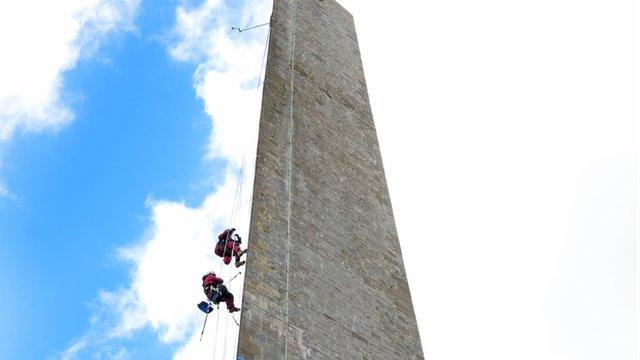Model made of Wellington monument to find 'weaknesses'
- Published

Surveyors abseiled down the 174ft (53m) high tower to scan it with a ground-penetrating radar machine
A computer model of one of the world's tallest three-sided obelisks is being made to find out why it is falling apart.
Wellington monument on the Blackdown Hills, in Somerset, was built in 1817 but since 2005 it has been fenced off because of falling stone debris.
The National Trust is using ground-penetrating radar on the 174ft (53m) tower to see under its stone cladding.
Ken Evans, from the trust, said the work was "crucial".
Built on one of the highest points of the Blackdown Hills, the landmark was put up as a tribute to the Duke of Wellington's military achievements at the Battle of Waterloo.
But according to the trust, it has been struck by lightning twice in its history and renovating the very tall landmark every 10 to 15 years has been "expensive and unsustainable".

The monument was closed to the public in 2005 and safety barriers erected after cracks were discovered
Mr Evans, the trust's building surveyor, said the radar study was one of several being carried out to "understand this unique and somewhat complex monument".
"We have been using wind and movement sensors which have already surprised us by showing that it doesn't flex in the wind quite as much as we expected," he said.
"The ground-penetrating radar seeks to identify voids and gaps in the stonework under the surface but should also tell us more about the materials which were used to build the obelisk."
Data from the detailed survey will also be used to build a computer model of the obelisk and help with a "more effective repair approach".